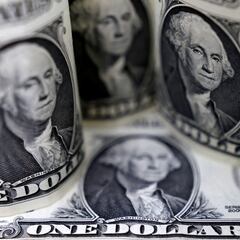What is different about the new CPI calculation process in 2023?
As the BLS prepares to release the January inflation report, here’s the lowdown on a key change that the agency is introducing this year.


Inflation was one of the most prominent economic trends in the United States throughout 2022 and the monthly release of the inflation data report became a key focus of the markets.
The monthly consumer price index (CPI) inflation report from the Bureau of Labor Statistics (BLS) gives insight into price changes in the previous month, compared to the same point 12 months earlier. Last year the CPI release dates were amongst the moment volatile for stock markets.
On Tuesday the BLS will release the January 2023 inflation report, but is the first set of data to be calculated using the new CPI process. The CPI figure is based on a ‘market basket’ of goods and services that acts as a proxy for prices more generally. For 2023 the BLS will start updating spending weights on an annual basis, rather than the biannual process used previously.
This should keep spending weights relevant as consumer spending practices change over time.
Tuesday, we get the CPI report.
— Ophir Gottlieb (@OphirGottlieb) February 11, 2023
Consensus estimates are:
》CPI
• YoY: 6.2% (6.5% prior)
• MoM: 0.4% (0.1% prior)
》Core CPI
• YoY: 5.5% (5.7% prior)
• MoM: 0.4% (0.4% prior)
》Charts of both measures below
Will be covered on Daily Economics:https://t.co/vv0NxRg7DY pic.twitter.com/113iF091w6
What are the BLS spending weights?
Spending weights can also be thought of as spending shares, or the proportion of the total basket value that is made up by each individual product. This data will now be updated on an annual basis to ensure that the typical basket stays more relevant and reflective of spending patterns.
For example, gasoline went up considerably during the first half of 2022 and the national average price reached record levels. This would mean that the price of gasoline would have seen its spending weight figure increase considerably. However in reality some consumers would have responded by reducing the amount of gasoline they buy – perhaps by using public transport – so their real-world spend would have remained similar.
By adjusting the spending weights more frequently the BLS will hope to make the inflation data more accurate.
What have experts said about the January inflation report?
After rampant inflation throughout much of 2022, economists will be hoping for a continued cooling in the markets to start of 2023. The Federal Reserve was able to slow the rate of price increases towards the end of last year but the January jobs report, published earlier this month, suggested that the economy is still running hot.
More than 500,000 new jobs were added last month, nearly trebling predictions, and the S&P 500 rose by more than 6% in January. These strong figures could well see inflation remain high.
"It's gonna be difficult to feel too good about where inflation is going," says @BankrateGreg ahead of the Labor Department's release of Consumer Price Index report. pic.twitter.com/fsBW94YnkM
— CNN Early Start (@EarlyStart) February 14, 2023
“Consumer prices look to rise the most in three months in January, by 0.5%, pumped by higher gas prices and food costs and a sharp rebound in used car prices,” warned Michael Gregory, deputy chief economist at BMO Capital Markets.
Kevin Simpson, founder and chief investment officer at Capital Wealth Planning, added: “Both inflation measures have trended downward in recent months. We will be looking for a continuation of that trend.”
Related stories
“After January’s jobs report brought about renewed Fed hawkish rhetoric, the CPI will need to show markets that the Fed’s plan and actions are coming to fruition,” he said.
“If inflation starts trending upwards again, the Fed could be forced to alter its path.”

